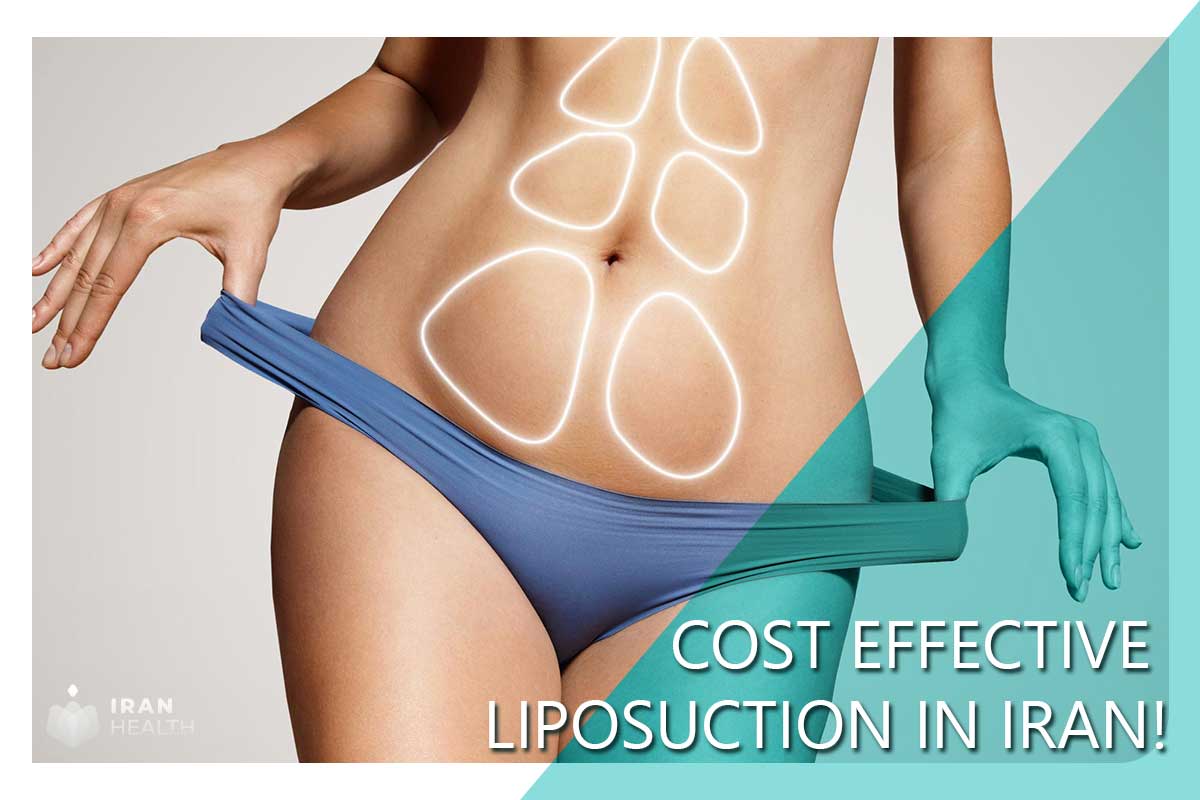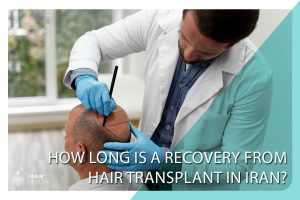liposuction in Iran a certain amount of serum containing specific compounds is injected into the subcutaneous fat and then extract the fluid
The history of plastic surgery in Iran goes back many years, when many people were having congenital problems, which made them sad. Gradually, with the advancement of medical science, plastic surgery has progressed well in Iran, and we have seen many cosmetic surgeries in the past 10 years.
Many of them may not need or have any congenital problems at all, but due to their inappropriate appearance they have undergone some plastic surgery on their bodies and Iran is one of the countries that has performed many surgeries in this area and many people from other countries travel to Iran every day to have surgery in this count.
Cost effective liposuction in Iran is the reason why many people travel to Iran to perform this procedure
Current Therapeutic Methods for Abdominal Surgery in Iran
- Abdominal Plastic Surgery, Abdominoplasty in Iran or Tummy Tuck
- Liposuction, or subcutaneous fat removal
- Combine these two methods

Abdominoplasty in Iran or Tummy Tuck in Iran
In surgery, shear abdominoplasty is applied to the lower abdomen, such as a caesarean section, but longer than the abdominal skin, so that all abdominal skin and fat are removed at the bottom of the belly button and the patient’s normal umbilicus is preserved until a new hole in the abdomen is removed. Exfoliate the skin.
Then the remaining abdominal skin above the navel is partially separated from the abdominal wall muscles to allow the remaining skin to be stretched enough and attached to the lower edge of the abdominal incision.
During this operation, the abdominal wall muscles may loosen, especially in the midline, above and below the navel. This condition is more common in women who have had one or more pregnancies once. This abdominal surgery is known as Tummy lift or Tummy Tuck in Iran.
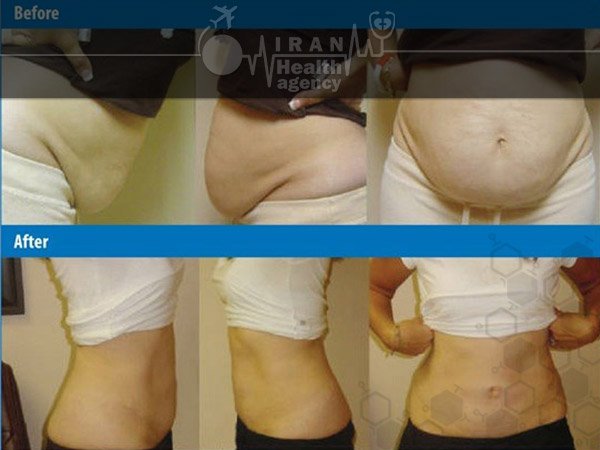
Liposuction in Iran
In this method, a certain amount of serum containing specific compounds is injected into the subcutaneous fat and then extract the fluid and fat using special tubes by creating small holes in the skin.
The amount of injectable fluid varies depending on the individual’s weight and health status,
and the amount of fat removed depends on the amount of fluid injected, and even in the best case scenario,
no more than a few liters of fat can be removed in one session.
So, in people with fat around the abdomen and flank, it may take more than one session. This method is suitable for people who are obese but do not have excess skin or abdominal cramping or are partial and their skin quality is good they have little skin.
These are mostly young women who are not pregnant or men who suffer from abdominal and lateral obesity. People who do not want to undergo extensive surgery and do not seek correction of abdominal pain and just want to have their abdominal obesity benefit from this method.
Combine these two methods
In people with localized obesity above the abdomen and flanks and lower abdomen, the combination of the above two approaches can achieve optimal results.
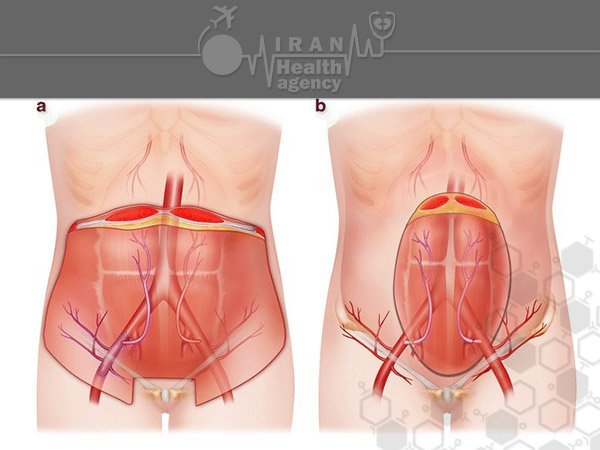
Abdominal Surgery in Iran
In general, after general anesthesia, the surgeon usually performs a cut on the abdomen. In abdominal surgery, a long incision is first made above the pubic area between the two pelvic bone cavities, which vary in shape and length depending on the individual condition of each patient. In minor abdominal or mini abdominoplasty surgery, the surgeon makes a shorter incision.

The second incision is given in cases of abdominoplasty to remove the umbilical cord from the surrounding tissue and to access the upper abdomen. In a mini-abdominoplasty, the first incision is much shorter and the navel may not be manipulated, although its appearance may change slightly.
In the following figures, the incisions for each of the two conventional abdominoplasty and mini abdominoplasty procedures are compared:
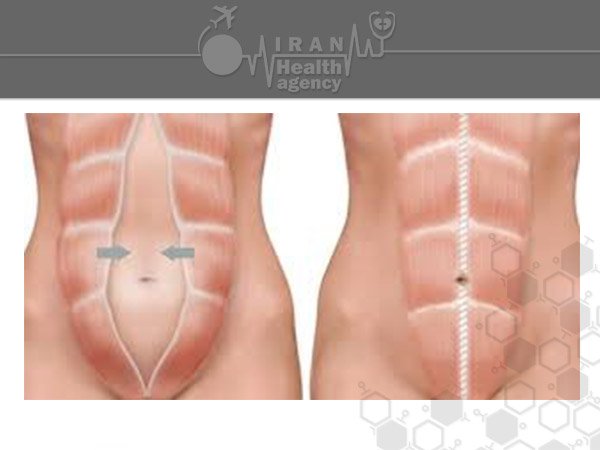
After the incisions are made, the surgeon separates the skin and fat all the way to the lower edge of the ribs from the underlying layers, thereby revealing the vertical abdominal muscles. By tightening them around the midline, the muscles are tightened by the sutures, positioned in their new position, creating a smoother abdominal wall and narrower waist circumference.
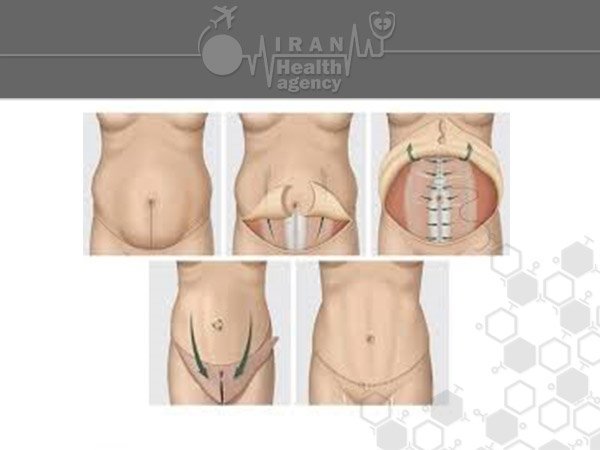
Finally, the extra fat and skin tissue are removed, and once the new navel is identified and removed, the skin and underlying tissues are closed in several layers. The following image shows all the steps involved in abdominal cosmetic surgery:

A complete abdominoplasty can take anywhere from 1 to 2 hours depending on the extent of the operation. On the other hand, a mini-abdominoplasty usually takes one and a half hours to two hours.
Medical Tourism in Iran
Medical tourism authorities in Iran include the three agencies of the Cultural Heritage and Tourism Organization, the Ministry of Health and the Ministry of Foreign Affairs.
The development and expansion of medical tourism needs more cooperation than other countries, so far this coordination has not been fully achieved.
According to the World Health Organization, up to Fifty billion dollars annually reaches destination countries through medical tourism.
In the case of Iran, it is believed that Iran has the capacity to attract about one million medical tourists annually, equivalent to Seventy billion dollars in revenue.
The Ministry of Health has plans for the future. These may include efforts to attract international patients, provide them with entry to the country, and closely monitor the treatment centers.
The plan introduces the country’s first-rate hospitals as health centers and closely monitors their performance.
There was also a plan to offer medical or health visas to foreign nationals to facilitate their entry into the country and the State Department, although both entities approved.
Risks of Abdominal Lift Surgery
The risks involved in abdominal lifting surgery are minor and require that the surgery be performed by a qualified plastic surgeon with sufficient experience in the surgery.
Swelling and bruising, wound infection and bleeding, suture enlargement along with suture line, risk of thrombosis and embolism are significant risks.
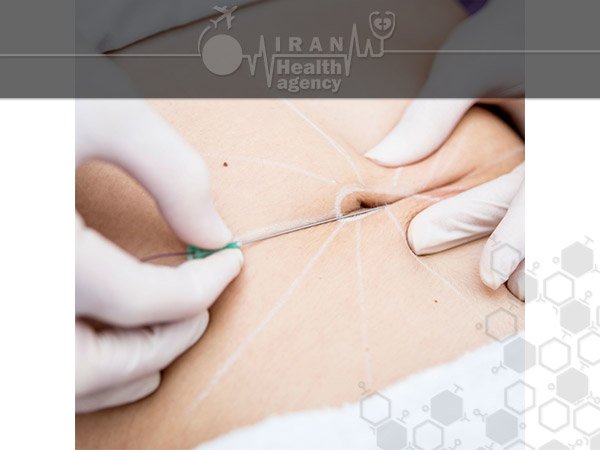
Pre-abdominal surgery recommendations
At least 3 days before the date of surgery, you should discontinue the use of medications that have the potential to prevent blood clotting with the advice of your treating physician. Minimizing the use of nicotine and alcohol 2 weeks before the date of surgery is mandatory and be sure to tell your surgeon if you have allergies or treatable illnesses. If you get bruised too quickly and with minor blows, be sure to tell your surgeon.
Post-surgery recommendations
Do not use the pelvis after surgery for a long time and, if possible, use the help of your companions on the day of surgery to at least get to the toilet and take a short walk to the hospital hallway the next day. If the sutures are not absorbed, they should be stretched after 0–2 days. Normally after an abdominal surgery, a rest period of one week is recommended at home, and abdominal surgery should be closed for 2 weeks after surgery. In addition, you should avoid heavy lifting and exercise, including swimming, for 8 to 10 weeks and avoid sunbathing and solarium for 3 weeks.
The best plastic surgeon in Iran
There are many plastic surgeons in Iran and various cities in Iran who have recorded many successful surgeries in their medical records. Among them are plastic surgeons in Tehran including Dr. Mehdi Ahmadi and Mohammad Taghi Imani who have the following specialties:
Dr. Mehdi Ahmadi
- Surgeon and ENT specialist
- Over 2 years of experience in nose and facial surgery
- Member of the European and American Society of Nasal Surgeons and Sines
- Member of the American Academy of Otolaryngology
- His services in plastic surgery:
Prostheses, gels, Botox, bony and bony nasal surgery without pain and bleeding and bruising.
Suture-free tonsillectomy or RF. Ear cosmetic surgery. Types of lips, cheeks, chin
Dr. Mohammad Taghi Imani
- Specialist in cosmetic and reconstructive plastic surgery
- Mohammad Taghi Imani with over 5 years of successful experience in cosmetic and reconstructive plastic surgery and educational and research activities, along with sufficient experience and knowledge to perform a variety of plastic surgeries, especially in the field of cosmetic nose and facial surgery.
- Restorative
Ear and nose reconstruction is proficient. - Known as a plastic surgeon, he has devoted his professional life to the following activities, along with his academic career as a faculty member.
- His services in plastic surgery:
Nasal Cosmetic Surgery & Nose Repair, Ear Restoration & Reconstruction, Cosmetic Surgery & Complete Breast Reconstruction After Mastectomy, Head Lift, Eyebrow & Eyelid, Cost effective Liposuction in Iran, Lifting & Shaping, Abdominal Surgery, Non-Surgical Rejuvenations such as Botox Injection, Gel and fillers, trauma repair, congenital malformations, cancer treatment and other complex repair operations
[/av_textblock]
